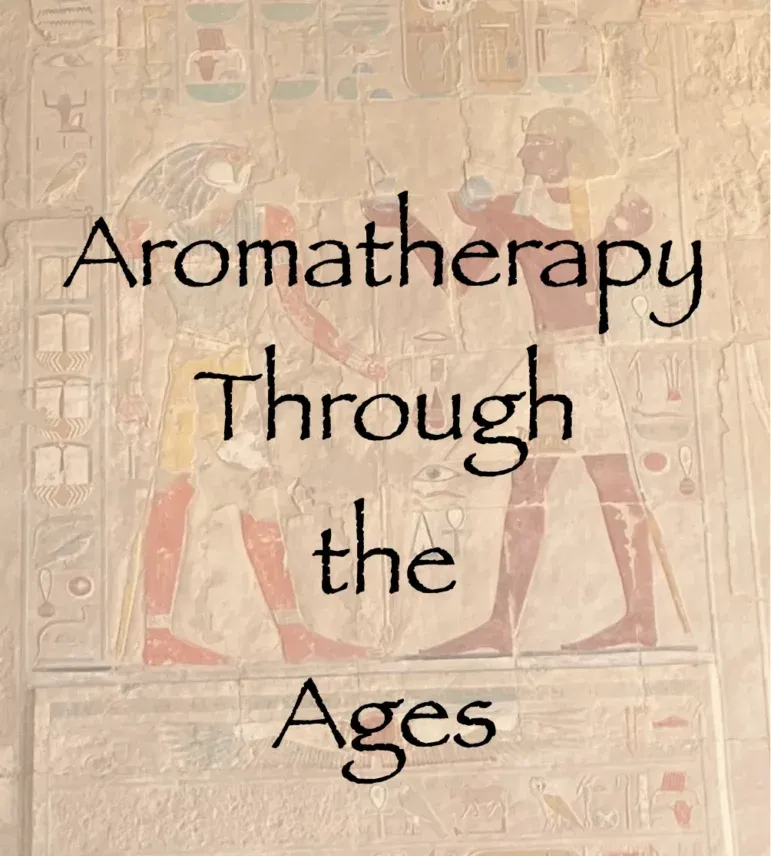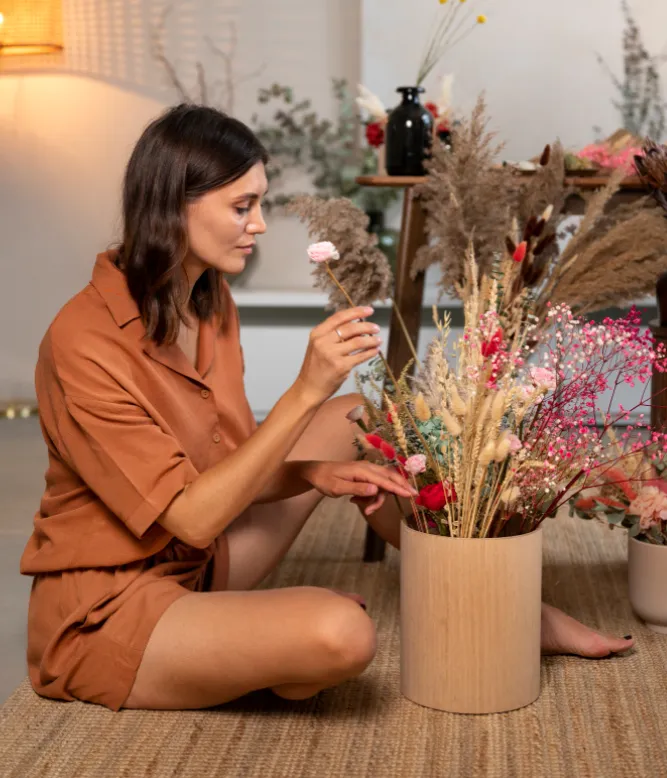Aromatherapy Through
the ages

For many centuries essential oils and aromatics were used for religious rituals, the treatment of illness and other physical and spiritual needs. It is possible that the people of ancient times had a greater understanding of essential oils and aromatherapy than we have today. Tradition and historical records provide insights and understanding of how essential oils were used in the past, and how they can benefit our lives today.
The earliest pictorial references associated with aromatherapy are believed to be images on the walls of the Lascaux caves in southwestern France which are thought to date from approximately 18,000 B.C.
The Egyptians were masters with essentials oils, aromatics and ointments, especially in the embalming process. They used balsams, perfumed oils, scented barks, resins, spices and aromatic vinegars in everyday life.
There are some suggestions that the Ancient Chinese were using aromatic oils to treat illness at about the same time as the Egyptians.
Traditional Indian medicine called “Ayur Veda,” a natural healing system blending spiritual, philosophical and practical elements, has a 3000-year history of incorporating essential oils into their healing potions.
Between 400-500 B.C.E. the Greeks recorded knowledge of essential oils adopted from the Egyptians. The Greek physician Hippocrates (460-377 B.C.E.), known to us as the “Father of Medicine” documented the effects of some 300 plants. He reportedly believed strongly in the medicinal benefit of fumigation with aromatics and used fumigation in the city of Athens to combat the plague.
When it comes to aromatics and health, more than any other culture, the Romans took the use of essential oils to an a whole new level. They bathed with them lavishly, several times a day, and had frequent massages with essential oils.
During the Middle Ages, Hippocrates’ wisdom and the use of aromatics was denounced by the Roman Catholic Church as decadent; bathing for healing was deemed inappropriate. This resulted in the therapeutic use of essential oils being reduced in regions under the Roman Catholic Church’s rule, however, they were kept in use for their pleasant aromas.
Native Americans had a long history of burning incense and using scented ointments. Throughout the Americas, massage with fragrant oils was a common form of therapy.
During the seventeenth and eighteenth centuries aromatherapeutic principles coexisted with the scientific approach to medicine. At the end of the eighteenth century essential oils were still widely used in medicine. As chemistry began to grow as a discipline and plant cures could be synthesized in the laboratory aromatherapy and its oils began to lose their place in the pharmacopeia, the official publication containing a list of medicinal drugs with their effects and directions for their use.
Essential oils have stood the test of time and have proven their efficacy and effectiveness. By studying the past we can hope to gain a better understanding and appreciation of the use of essential oils in all aspects of our life. With the renewed interest in essential oils and resurgence in their use, there are new clinical studies and publications documenting the efficacy and benefits.
Aromatherapy is now becoming a powerful bridge between cultures, modalities and health care professionals.

